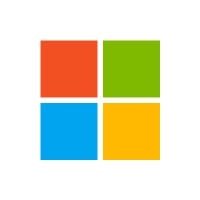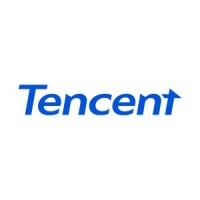
OpenText Company Cyber Security Posture
opentext.comOpenText is a world leader in Information Management, helping companies securely capture, govern and exchange information on a global scale. OpenText solves digital business challenges for customers, ranging from small and mid-sized businesses to the largest and most complex organizations in the world. For more information about OpenText (NASDAQ/TSX: OTEX), visit www.opentext.com
OpenText Company Details
opentext
22258 employees
446557.0
511
Software Development
opentext.com
Scan still pending
OPE_6052516
In-progress
Between 900 and 1000
This score is AI-generated and less favored by cyber insurers, who prefer the TPRM score.
 OpenText Global Score
OpenText Global Score.png)

OpenText Company Scoring based on AI Models
| Model Name | Date | Description | Current Score Difference | Score |
|---|---|---|---|---|
| AVERAGE-Industry | 03-12-2025 | This score represents the average cybersecurity rating of companies already scanned within the same industry. It provides a benchmark to compare an individual company's security posture against its industry peers. | N/A | Between 900 and 1000 |
OpenText Company Cyber Security News & History
| Entity | Type | Severity | Impact | Seen | Url ID | Details | View |
|---|---|---|---|---|---|---|---|
| Carbonite | Breach | 60 | 4 | 06/2016 | CAR1914123 | Link | |
Rankiteo Explanation : Attack with significant impact with customers data leaksDescription: Carbonite, a provider of online computer and server backup services suffered a password reuse attack in which some users’ credentials, obtained elsewhere, were used to obtain user data. The company notified its more than 1.5 million individual and small business customers and forced them to password reset. The attack was a result of a third-party attacker using compromised email addresses and passwords obtained from other companies that were previously attacked. | |||||||
OpenText Company Subsidiaries

OpenText is a world leader in Information Management, helping companies securely capture, govern and exchange information on a global scale. OpenText solves digital business challenges for customers, ranging from small and mid-sized businesses to the largest and most complex organizations in the world. For more information about OpenText (NASDAQ/TSX: OTEX), visit www.opentext.com
Access Data Using Our API

Get company history
.png)
OpenText Cyber Security News
Maria Pospelova
Maria Pospelova is Senior Manager of AI & Data Science at OpenText Cybersecurity, where she serves as Principal Data Scientist. She was previously a Senior ...
OpenText Launches Next Generation OpenText Cybersecurity Cloud With AI Powered Threat Detection and Response Capabilities
OpenText Cybersecurity provides comprehensive security solutions for companies and partners of all sizes. From prevention, detection and ...
Stay ahead with Titanium X and OpenText Cybersecurity Cloud
OpenText Cybersecurity has delivered continuous innovation to help organizations detect threats accurately and proactively, respond immediately and ...
6 reasons why SMBs love OpenText MDR
With built-in security controls, reporting, and documentation, OpenText helps protect customer data, reduce risks, and keep you clear of costly ...
SMBs Under Siege – The 2025 OpenText Cyberthreat Report: Understanding the Cyberthreats Facing SMBs
Organizations are facing increased pressure from AI-driven phishing campaigns, expanded malware infections, and novel obfuscation techniques.
Why Managed Security Services are essential in today’s cyber landscape
Cybersecurity is no longer just about reacting to threats—it's about proactively defending against them. Managed Security Services, SOC-as-a- ...
Media Alert: OpenText Showcases End-to-End Cybersecurity Innovation at RSA Conference 2025
OpenText Cybersecurity provides comprehensive security solutions for companies and partners of all sizes. From prevention, detection and ...
OpenText Cybersecurity 2024 Global Ransomware Survey: Supply chain and AI-powered attack fears intensify
In the third annual OpenText Cybersecurity 2024 Global Ransomware Survey, we put a magnifying glass to these growing attack techniques and vectors.
People, risk, and the modern CISO
Discover the evolving CISO role and how OpenText Managed Security Services support risk management, incident response, and team leadership.

OpenText Similar Companies

Expedia Group
At Expedia Group (NASDAQ: EXPE), we believe travel is a force for good – it opens minds, builds connections, and bridges divides. We create transformative tech that enables unforgettable experiences for all travelers, everywhere. Our trusted family of brands are known and loved by millions, and we p

Microsoft
Every company has a mission. What's ours? To empower every person and every organization to achieve more. We believe technology can and should be a force for good and that meaningful innovation contributes to a brighter world in the future and today. Our culture doesn’t just encourage curiosity; it

Dassault Systèmes
Dassault Systèmes, the 3DEXPERIENCE Company, is a catalyst for human progress. We provide business and people with collaborative virtual environments to imagine sustainable innovations. By creating virtual twin experiences of the real world with our 3DEXPERIENCE platform and applications, our custom

Amazon Fulfillment Technologies & Robotics
On the Fulfillment Technologies & Robotics Team, we build dynamic partnerships between people and intelligent machines. This intricate collaboration helps Amazon fulfill orders with unmatched accuracy. Since we began working with robotics, we've added over a million new jobs worldwide. Working in s

Cadence
Cadence is a pivotal leader in electronics and system design, building upon more than 30 years of computational software expertise. The company applies its underlying Intelligent System Design strategy to deliver software, hardware and IP that turn design concepts into reality. Cadence customers are

Tencent
Tencent is a world-leading internet and technology company that develops innovative products and services to improve the quality of life of people around the world. Founded in 1998 with its headquarters in Shenzhen, China, Tencent's guiding principle is to use technology for good. Our communication

Frequently Asked Questions
Explore insights on cybersecurity incidents, risk posture, and Rankiteo's assessments.
OpenText CyberSecurity History Information
How many cyber incidents has OpenText faced?
Total Incidents: According to Rankiteo, OpenText has faced 1 incident in the past.
What types of cybersecurity incidents have occurred at OpenText?
Incident Types: The types of cybersecurity incidents that have occurred incident Breach.
How does OpenText detect and respond to cybersecurity incidents?
Detection and Response: The company detects and responds to cybersecurity incidents through containment measures with Forced password reset and communication strategy with Customer notification.
Incident Details
Can you provide details on each incident?

Incident : Password Reuse Attack
Title: Password Reuse Attack on Carbonite
Description: Carbonite, a provider of online computer and server backup services, suffered a password reuse attack in which some users’ credentials, obtained elsewhere, were used to obtain user data. The company notified its more than 1.5 million individual and small business customers and forced them to password reset. The attack was a result of a third-party attacker using compromised email addresses and passwords obtained from other companies that were previously attacked.
Type: Password Reuse Attack
Attack Vector: Compromised Credentials
Vulnerability Exploited: Password Reuse
Threat Actor: Third-party attacker
Motivation: Data Theft
What are the most common types of attacks the company has faced?
Common Attack Types: The most common types of attacks the company has faced is Breach.
Impact of the Incidents
What was the impact of each incident?

Incident : Password Reuse Attack CAR1914123
Data Compromised: User Data
What types of data are most commonly compromised in incidents?
Commonly Compromised Data Types: The types of data most commonly compromised in incidents are User Credentials.
Which entities were affected by each incident?

Incident : Password Reuse Attack CAR1914123
Entity Type: Service Provider
Industry: Technology
Size: More than 1.5 million customers
Customers Affected: 1.5 million
Response to the Incidents
What measures were taken in response to each incident?

Incident : Password Reuse Attack CAR1914123
Containment Measures: Forced password reset
Communication Strategy: Customer notification
Data Breach Information
What type of data was compromised in each breach?

Incident : Password Reuse Attack CAR1914123
Type of Data Compromised: User Credentials
How does the company handle incidents involving personally identifiable information (PII)?
Handling of PII Incidents: The company handles incidents involving personally identifiable information (PII) through was Forced password reset.
Investigation Status
How does the company communicate the status of incident investigations to stakeholders?
Communication of Investigation Status: The company communicates the status of incident investigations to stakeholders through was Customer notification.
Post-Incident Analysis
What were the root causes and corrective actions taken for each incident?

Incident : Password Reuse Attack CAR1914123
Root Causes: Password Reuse
Corrective Actions: Forced password reset
What corrective actions has the company taken based on post-incident analysis?
Corrective Actions Taken: The company has taken the following corrective actions based on post-incident analysis: Forced password reset.
Additional Questions
General Information
Who was the attacking group in the last incident?
Last Attacking Group: The attacking group in the last incident was an Third-party attacker.
Impact of the Incidents
What was the most significant data compromised in an incident?
Most Significant Data Compromised: The most significant data compromised in an incident was User Data.
Response to the Incidents
What containment measures were taken in the most recent incident?
Containment Measures in Most Recent Incident: The containment measures taken in the most recent incident was Forced password reset.
Data Breach Information
What was the most sensitive data compromised in a breach?
Most Sensitive Data Compromised: The most sensitive data compromised in a breach was User Data.
What Do We Measure?
















Every week, Rankiteo analyzes billions of signals to give organizations a sharper, faster view of emerging risks. With deeper, more actionable intelligence at their fingertips, security teams can outpace threat actors, respond instantly to Zero-Day attacks, and dramatically shrink their risk exposure window.
These are some of the factors we use to calculate the overall score:
Identify exposed access points, detect misconfigured SSL certificates, and uncover vulnerabilities across the network infrastructure.
Gain visibility into the software components used within an organization to detect vulnerabilities, manage risk, and ensure supply chain security.
Monitor and manage all IT assets and their configurations to ensure accurate, real-time visibility across the company's technology environment.
Leverage real-time insights on active threats, malware campaigns, and emerging vulnerabilities to proactively defend against evolving cyberattacks.




